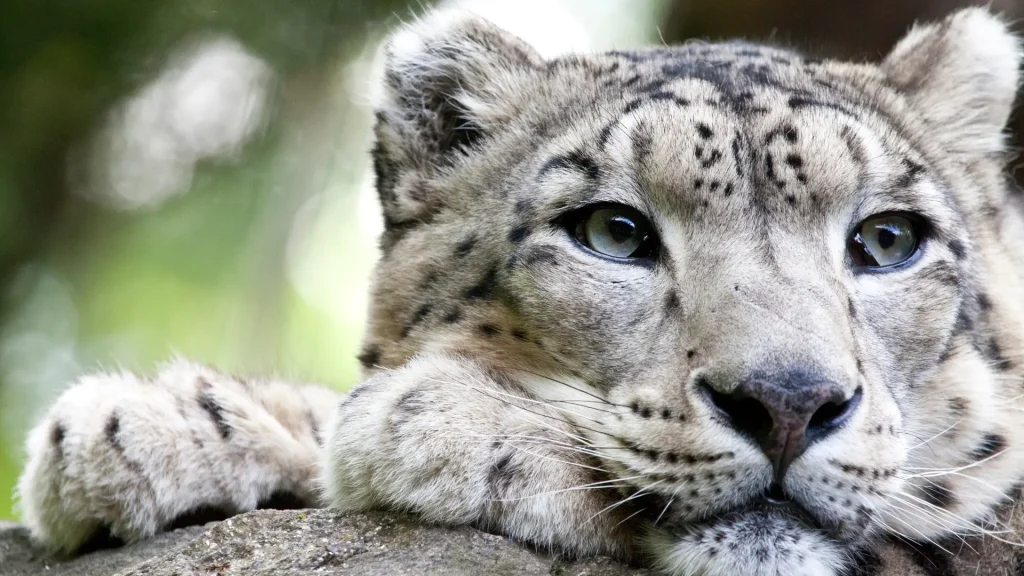On the Trail of the Ghost: Tracking Snow Leopards in Ulley, Ladakh
In the austere hush of Ladakh’s trans‑Himalayan ridgelines, the snow leopard (Panthera uncia) reigns as a phantom — elusive, fiercely silent, and deeply revered.
It is said that snow leopards are ghosts of the mountains—elusive, silent, living in a geometry of rock and snow where human certainty falters. In India, two of the more compelling arenas to attempt that sighting are Ulley in Ladakh and the Spiti Valley of Himachal Pradesh. Though they share the same prey base and high‑altitude ethos, the experiences diverge in climate, terrain, culture, and the art of tracking itself. After having followed the phantom in Ladakh, I set my feet to Spiti, hoping to see how the ghost behaves in its alternate theater.
Spiti Valley is not Himalayan in the lush, monsoon‑soaked sense. It is high, arid, skeletal—a “cold desert” plateau of wind‑scoured ridges, stony slopes, and stark vistas. The Kibber Wildlife Sanctuary (3,800 to over 6,000 m) is a major stronghold here, sheltering snow leopards, Himalayan wolves, ibex, blue sheep, and more. Recently, Spiti has gained further protection with the establishment of the Tsarap Chu Conservation Reserve in 2025, covering some 1,585 km², intended in part to secure corridors for the snow leopard and its prey.
In winter, when upper ridges are buried in snow and food is scarce, snow leopards descend closer to valleys, making them marginally more accessible. Many trackers schedule Spiti expeditions between January and March, aiming to catch that window. But “accessible” is relative: temperatures plunge, days shorten, and the land tests human resolve.

Ulley lies in central Ladakh, perched at around 13,000 ft in the Sham region, reachable from Leh in a few hours. We have picked out the perfect Wildlife Lodge, a community‑run project, that is the base for many Ladakh snow leopard tours, offering relative comfort—heated rooms, real coffee, warm meals—all designed to buffer the harshness of the cold while you scan crags for that ghost.
Ladakh’s advantage lies in mature tracking networks, long experience, and a reputation: many operators claim success rates of up to 90 %, though that is contested and should be approached with cautious optimism. In Ulley, trackers know the land intimately—when ibex move, where the wind shifts, which ridges act as natural funnels. The terrain is rugged, but not as bone‑dry as Spiti; the weather, though extreme, is marginally more forgiving.
In both domains, the fundamentals are the same: you start with human intelligence (villager reports, herder sightings), then move into field signals—tracks in snow, signs of disturbance, alarm calls of prey species or vultures, and opportunistic clues. The trackers become conduits between land and guests.
In Ladakh/Ulley, the watchers often patrol multiple valleys by vehicle, then station at vantage points, scanning ridges with telescopes. They know where shadows fall, where wind-blown snow gathers, where a fur tuft might just betray itself. Because the network is mature, they can shift logs and snags rapidly, adjusting placements based on real-time input.
In Spiti, the tracking is harder in some senses—because the landscape is more unforgiving and the logistic margins slimmer. One might drive toward remote ridges, then trek on foot into narrower spurs. On some days, tracking involves sitting in one spot for hours, scanning slopes that stretch into infinity. Also, shorter daylight means less time in the field. Winter cold intensifies wind chill, and even simple movements must be calculated so as not to disturb fragile snow cover.
Comfort vs. austerity. In Ulley, you may warm your toes by a stove, sip lukewarm coffee between watches, and rest in cozy rooms. In Spiti, winter expeditions often demand more austerity—homestays or basic shelters, intermittent heating, and heavier reliance on your personal gear. The hardship is part of the pilgrimage.
Expectation vs. patience. Ladakh’s trackers sometimes promise a high likelihood—“come with me, I promise you’ll see a snow leopard” is a phrase skeptics hear. But in Spiti, the narrative is humbler: expect waits, expect absence, expect that even a glimpse is a grace. The more you let go of control, the better.
Scenery and silence. Spiti’s ridges seem crisper, more severely etched. The blue‑white emptiness presses in. Silence is deeper. In Ladakh, you often have cultural markers—village smoke, prayers flags, human presence—that anchor the wild in human rhythms. Spiti feels further removed from habit.
Risk and reward. When a snow leopard flickers across a ridge in Spiti in midwinter, the contrast between white fur and rock is a rare reveal—an almost violent burst of presence in emptiness. Because the conditions are harsher, when the ghost shows, it feels more like the land granting a secret. In Ladakh, there are perhaps more chances, but also more noise, more “red herrings,” more competition for angles and light.
Tracking snow leopards is never merely wildlife tourism. It is a lesson in humility, patience, and what it means to belong to a land where humans are guests. In both Ladakh and Spiti, you learn to travel with questions, not expectations. You learn that absence is as instructive as sight—every day you do not see the cat, you see the land itself.
Visiting Spiti with Ladakh experience provides a kind of dialectic: you see what is shared and what is radically different. You see that geography shapes possibility, that weather speaks as loudly as tracks do, and that in the high Himalaya, the mind often wins over the eyes.
So choose your ghost‑hunt wisely. If you want more facilities, mature networks, and balanced comfort, Ladakh/Ulley is a powerful place to start. If you crave starkness, the absolute edge, and a deeper confrontation with nature in its most minimal state, Spiti may very well be your theatre.Whichever you pick, remember: it is not about seeing the ghost. It’s about letting the ghost give you permission to see.